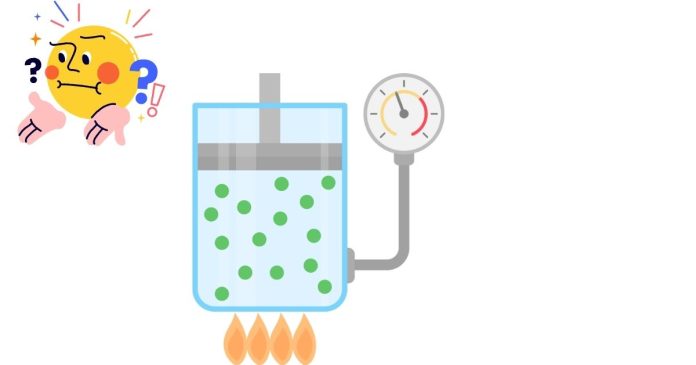The gas constant RR, also known as the universal gas constant, is a fundamental physical constant that appears in many equations in chemistry and physics, most notably in the ideal gas law. Its value and units depend on the system of units you are using.
Value of the Gas Constant:
- In SI units (Joules per mole per Kelvin, J/mol·K):
R=8.314J/mol\cdotpK
- In kilojoules per mole per Kelvin (kJ/mol·K):
R=0.008314kJ/mol\cdotpK
- The value of RR is constant and independent of the type of gas. It’s a proportionality factor that links the temperature, pressure, volume, and amount of gas in the ideal gas law.
The Ideal Gas Law:
The ideal gas law is an equation of state for a hypothetical gas called the “ideal gas” and is given by:
PV=nRT
Where:
- PP is the pressure of the gas (in pascals, Pa),
- VV is the volume of the gas (in cubic meters, m³),
- nn is the amount of substance of the gas (in moles, mol),
- RR is the gas constant (in J/mol·K or kJ/mol·K),
- TT is the temperature of the gas (in kelvin, K).
Derivation and Interpretation:
- The constant RR relates the energy of a mole of gas to its temperature and volume.
- Its value in units of J/mol·K or kJ/mol·K indicates the amount of energy required to raise the temperature of one mole of an ideal gas by 1 K (or 1°C).
The relationship between RR and energy can be important when considering various thermodynamic processes. For example, for an ideal gas undergoing an isothermal process (constant temperature), the equation simplifies to:
PV=nRT
This shows that for a given amount of gas at a constant temperature, the product of pressure and volume is constant.
Common Uses of RR in Thermodynamics:
- Work in Thermodynamic Systems: The gas constant is involved when calculating work done by or on a gas during expansion or compression, particularly in processes like isothermal or adiabatic conditions.
- Ideal Gas Equation: As seen in the ideal gas law, RR is a key part of calculations involving pressure, volume, and temperature of gases.
- Changes in Internal Energy or Enthalpy: The value of RR is used in various equations for changes in internal energy or enthalpy in systems involving gases.
- Enthalpy of Formation: The gas constant helps in calculating enthalpies of reactions when gases are involved, often through the ideal gas law.
-
Practical Applications:
- Engineering: RR is used in the design of systems that involve gases, such as engines, turbines, and refrigeration cycles.
- Chemistry: It is used to predict the behavior of gases in chemical reactions, including reactions in the gas phase.
- Meteorology: The behavior of air in the atmosphere is also governed by the ideal gas law, where RR helps explain processes like changes in temperature and pressure.
In summary, the gas constant 𝑅 R in kJ/mol·K is 0.008314 kJ/mol \cdotp K 0.008314kJ/mol\cdotpK and plays a central role in thermodynamics, particularly in relation to the behavior of gases.



